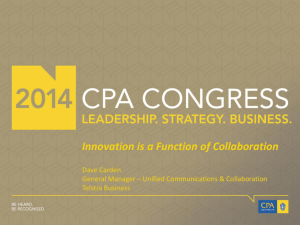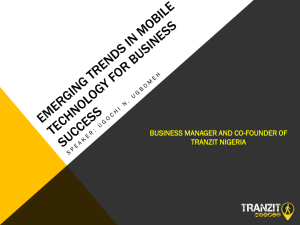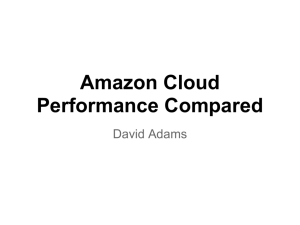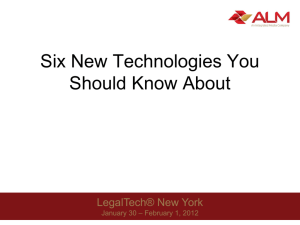Key Challenges and Emerging Trends in Mobile Software Engineering
advertisement
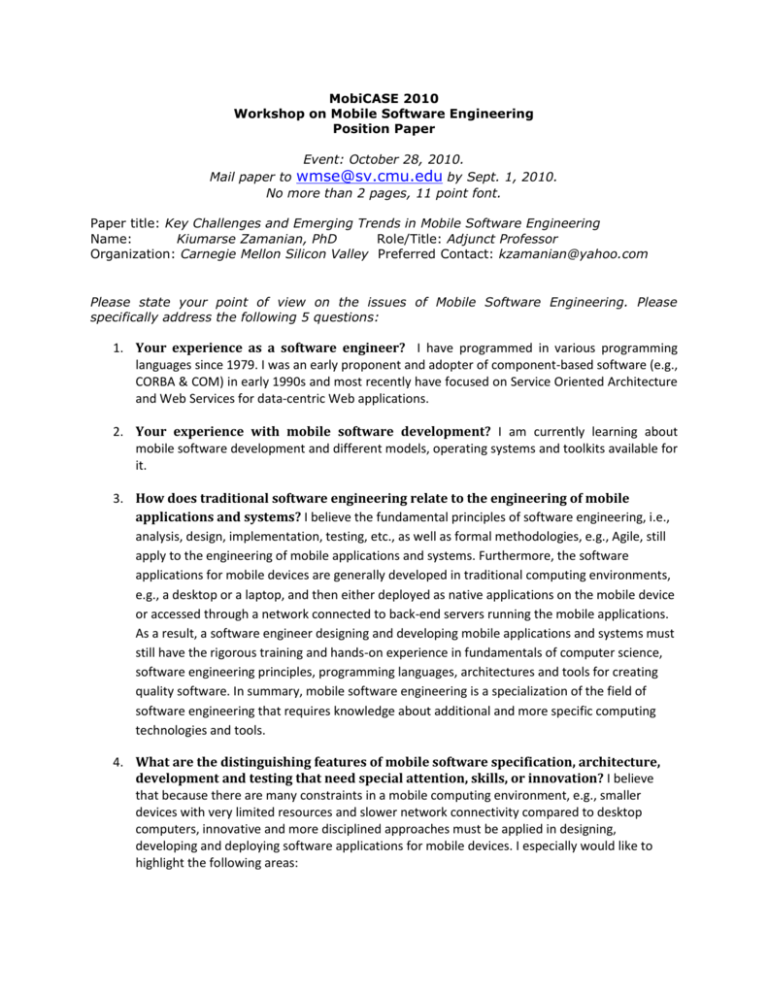
MobiCASE 2010 Workshop on Mobile Software Engineering Position Paper Event: October 28, 2010. Mail paper to wmse@sv.cmu.edu by Sept. 1, 2010. No more than 2 pages, 11 point font. Paper title: Key Challenges and Emerging Trends in Mobile Software Engineering Name: Kiumarse Zamanian, PhD Role/Title: Adjunct Professor Organization: Carnegie Mellon Silicon Valley Preferred Contact: kzamanian@yahoo.com Please state your point of view on the issues of Mobile Software Engineering. Please specifically address the following 5 questions: 1. Your experience as a software engineer? I have programmed in various programming languages since 1979. I was an early proponent and adopter of component-based software (e.g., CORBA & COM) in early 1990s and most recently have focused on Service Oriented Architecture and Web Services for data-centric Web applications. 2. Your experience with mobile software development? I am currently learning about mobile software development and different models, operating systems and toolkits available for it. 3. How does traditional software engineering relate to the engineering of mobile applications and systems? I believe the fundamental principles of software engineering, i.e., analysis, design, implementation, testing, etc., as well as formal methodologies, e.g., Agile, still apply to the engineering of mobile applications and systems. Furthermore, the software applications for mobile devices are generally developed in traditional computing environments, e.g., a desktop or a laptop, and then either deployed as native applications on the mobile device or accessed through a network connected to back-end servers running the mobile applications. As a result, a software engineer designing and developing mobile applications and systems must still have the rigorous training and hands-on experience in fundamentals of computer science, software engineering principles, programming languages, architectures and tools for creating quality software. In summary, mobile software engineering is a specialization of the field of software engineering that requires knowledge about additional and more specific computing technologies and tools. 4. What are the distinguishing features of mobile software specification, architecture, development and testing that need special attention, skills, or innovation? I believe that because there are many constraints in a mobile computing environment, e.g., smaller devices with very limited resources and slower network connectivity compared to desktop computers, innovative and more disciplined approaches must be applied in designing, developing and deploying software applications for mobile devices. I especially would like to highlight the following areas: a. b. c. d. Highly efficient systems and algorithms for low power consumption Innovative techniques to reduce wireless network access Smart ways of distributing and reducing the computation workload Innovative ways of combining the best of device-specific features with industry standards and cloud computing to create fast and interoperable solutions e. Open source software and standards that promote collaborative, low cost development of mobile software f. Reliable security and privacy measures related to accessing and sharing of data g. Intuitive, easy-to-use and appealing user interfaces and display technologies (including 3D) to access, manipulate and visualize information h. Automated and hassle-free means of using mobile apps as downloads or service 5. What is the suggested focus and agenda for mobile software engineering research and education? Similar to how mainframe computing evolved (but did not vanish) to clientserver computing that later evolved to multi-tier Web-based and service-oriented architecture, I believe that mobile computing is an evolving paradigm that requires new research and education that build on the existing knowledge and experience in computing and software engineering. I believe that designing and developing efficient and interoperable mobile applications could be a major focus area for mobile software engineering research and education. Efficiency applies to many aspects of mobile computing, such as algorithms, power consumption, network access, data storage, distributed computing, visualization, user interface, ergonomics, etc. Meanwhile, interoperability focuses on using open standards to make various mobile devices collaborate effectively, efficiently and reliably with each other as well as with other computers and devices (e.g., cloud servers, automobiles, refrigerators, ATMs, etc.). These two areas have clearly received considerable attention in traditional software engineering over the past two decades. However, the rapidly increasing speed of processors and abundance of low price memory combined with specialized graphics libraries and large monitors, efficiency is often not a major consideration for most software engineers when they design and create desktop or server applications. Furthermore, interoperability has generally been limited to software reuse and how software programs communicate and share information by means of a limited set of standards, such as Java, XML, HTML, etc. Given the constraints associated with most mobile devices, e.g., size, memory, battery and network bandwidth, combined with the exploding number of users worldwide who utilize these devices for demanding applications like video games and social networking, more specific research and education must be focused in the areas of developing efficient mobile applications that benefit from both the device-specific features and emerging cloud computing models. Mobile browsers are improving but mobile devices and their operating systems still offer many specific and proprietary features that are not (and can not be) utilized by general-purpose mobile browsers. Therefore,”smart” hybrid mobile applications that can leverage device-specific features with open standards and cloud computing could potentially offer an attractive alternative for mobile apps to run efficiently across multiple devices and operating systems while also utilizing cloud computing infrastructures for heavy computational and data workloads.








